Mixers are essential tools for bakers. Whether it’s a planetary mixer or a kneader, with a spiral or a whisk, efficient operation is essential to properly execute your recipes, avoid breakdowns and prevent production delays. However, following a few best practices can help ensure the optimal performance of your equipment throughout its life cycle.
Best Practice #1: Choose the right equipment for your recipes
Mixer or kneader? What type of tool? What volume of bowl? These are some of the fundamental questions you should ask yourself before purchasing a new item of equipment. These factors will condition the success of your recipes but also your equipment’s life span:
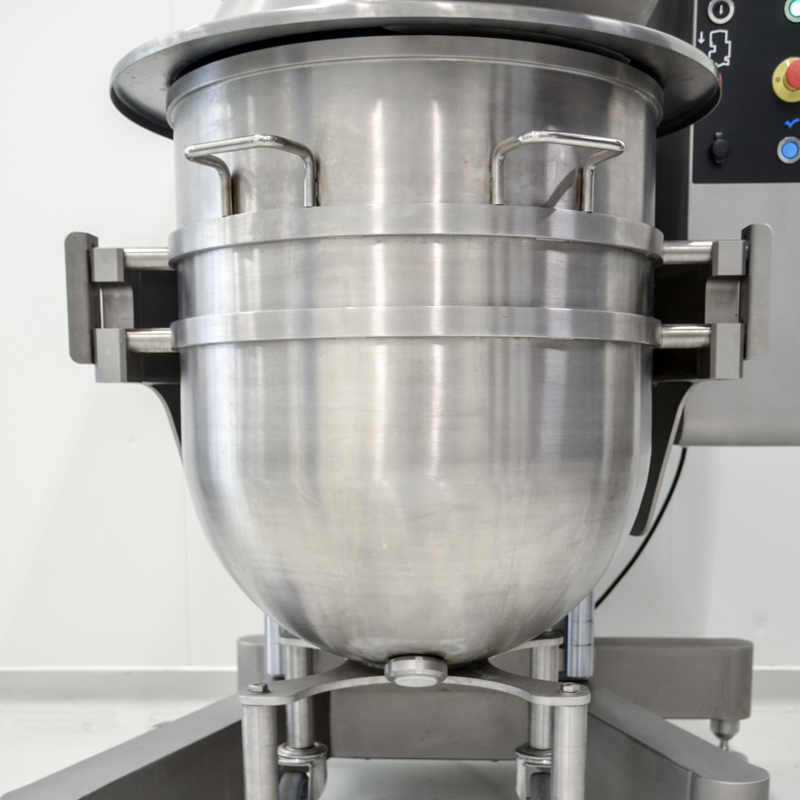
Bowl capacity
It must be adapted to the volume of dough you wish to produce each day. This is indicated in liters. Some manufacturers also indicate it in kg of dough, which allows you to better appreciate the quantity of dough and products that you can produce. However, be careful, the volume is indicated for an average hydration rate of 60%. It is important not to overload the bowl to avoid damaging your mixer. Exceeding the capacity limits can cause the machine to break down or the tool to be overworked, which can cause the tool motor to break down or the tool itself to break. To help you make the best choice for your needs, our experts have provided tables with the different types of applications and the maximum quantity of mixture recommended per type of dough.
Motor power
Depending on the type of dough, you will need more power to mix. This is often the case for bread dough, which is denser and more compact. For more liquid doughs, a lower power will still allow you to obtain a homogeneous mixture. The ingredients used – such as the type of flour for example – will also affect the strength of the dough, as will its hydration. If the motor is not powerful enough to knead the dough, the motor may stall. A motor on a variable speed drive will try to keep the power even and may collapse or be dragged along by the dough.
Choice of accessories
Make sure you choose the right mixing tool, otherwise you risk overheating the dough or putting too much strain on your equipment. The risk n°1 is rather at the process level: if you choose the wrong tool, the risk is to break the dough gluten network and fail to achieve the desired mixture. In the long run, the second risk is to break the tool. Spiral mixers or fork mixers are preferable for bread dough. The whisk allows good aeration and is best used for emulsions such as egg whites or whipped cream. As for the paddle, it is mainly used for liquid mixtures such as muffin batter or pancake batter.
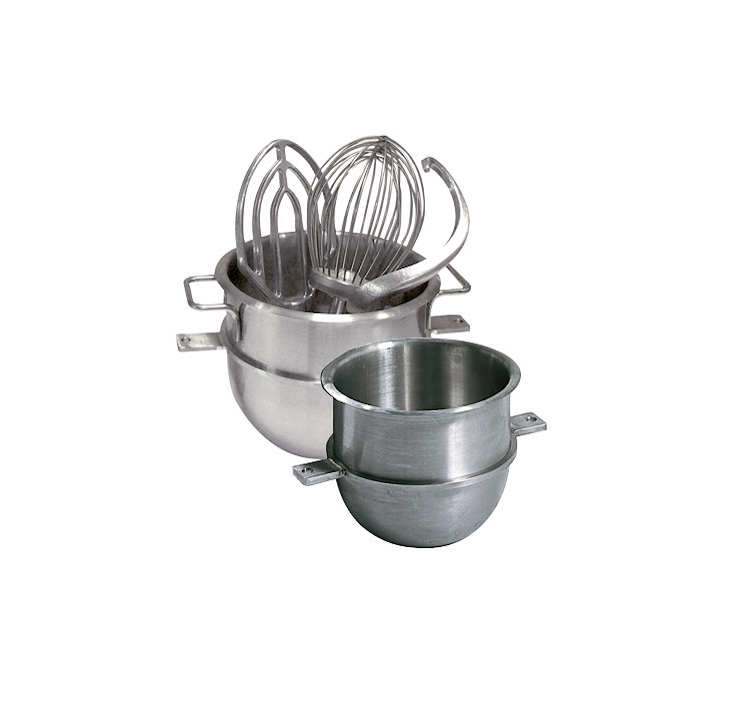
Setting up the mixer in your facility
You should take into account the space available and the place where you want to set up your equipment. This will affect the ergonomics and comfort of your employees and the flow of the different operations, for example the transfer of a bowl from the mixing station to the resting station. The adjustment of the machine on the floor is also very important. If the machine is not level on a flat floor, there is a risk of wear of the bowl due to friction, especially for models with removable bowls.
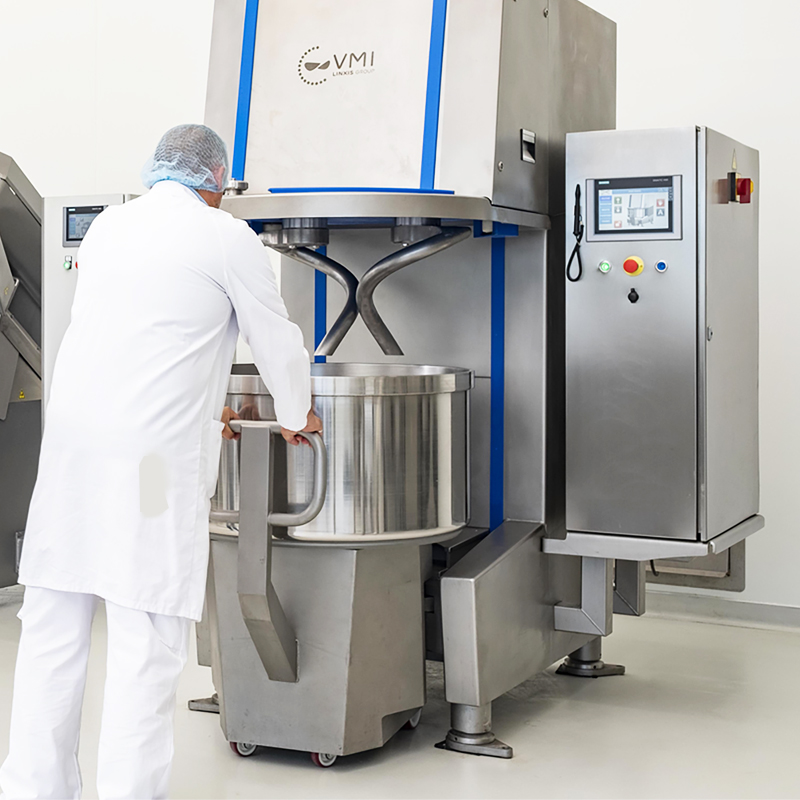
Best Practice #2 : Use your machine properly on a daily basis
Mixers and blenders are versatile pieces of equipment that can be used to make a variety of recipes: breads, pastries, creams, cakes, etc. The same equipment is now capable of producing a very wide range of recipes.
Adjusting mixing parameters
However, there are a number of parameters that must be considered when changing recipes, especially the mixing speed and time. The speed must be adjusted, even if the mixing tool remains the same between two different recipes.
Motors equipped with a variable speed drive offer the possibility to adjust the speed very precisely, which gives great flexibility to your production but requires a good control of the process. For example, a variable speed can be used for gentle pre-mixing or to adjust the speed to incorporate an ingredient during mixing. Keep in mind that choosing a speed that is too high for the density of your preparation can cause the motor to overheat, which can damage the windings and lead to motor failure. Eventually, this contributes to premature wear of your equipment. If the speed is too low, you won’t get a homogenous mixture.
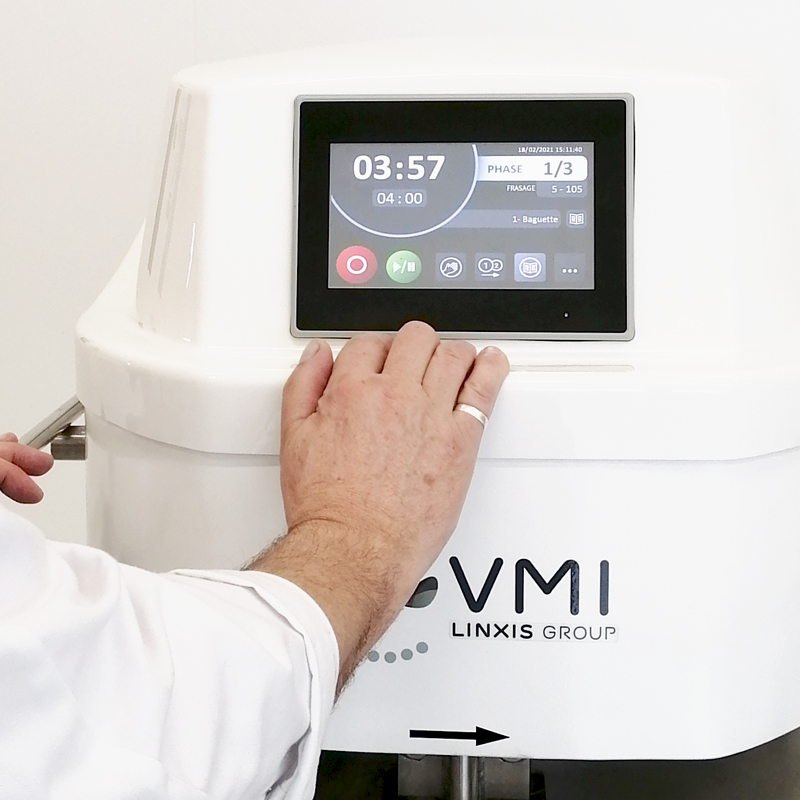
Another way to ensure optimal machine setup when changing recipes is to use the recipe programming mode. Most VMI mixers are now equipped with a touch screen that allows intuitive recipe programming. The recording of the parameters ensures consistent mixing quality and does not require detailed knowledge of the process parameters for each recipe. This is very convenient when several people are required to handle the machine.
You can also use our recipe sheets to find optimal mixing parameters, depending on the recipe and the equipment.
Handling the equipment
Finally, during your daily use, several actions can damage your equipment. One of the most common is placing objects, such as bags of flour, on the top cover of the mixer. This is a habit that should be avoided because the covers are not designed to support such loads, which can lead to breakage
We also suggest handling or changing tools carefully. For example, you should not hit the whisk on the bowl to evacuate the product, as this could result in deformation or breakage.
Best Practice #3 : Do not neglect the hygiene of your equipment
As you probably already know, respecting good hygiene and safety practices is essential in order to limit any health risks for your employees but also for your customers.
It is also important to be vigilant when purchasing your equipment, not all mixers on the market are equal in terms of hygiene and ease of cleaning. Good hygiene will ensure the quality of your productions as well as keeping your mixer in good working order.
Here are a few things to check when you buy:
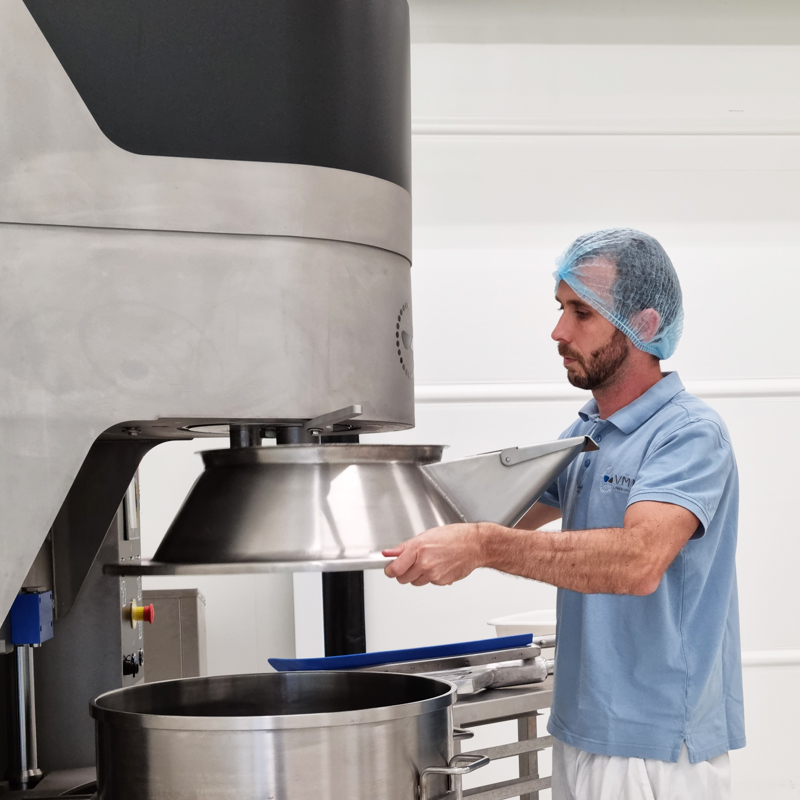
Materials used
To improve hygiene and facilitate the cleaning of the equipment, the materials chosen during design are essential. Stainless steel, for example, is suitable for food contact and is very resistant, especially to corrosion. It is used in the manufacture of our bowls and tools.
Protection against splashes and flour emissions
The presence of a cover on the bowl prevents the working area from getting dirty during production. A removable cover is preferable for easy cleaning. The cover also protects your employees from flour emissions, the main cause of baker’s asthma. Flour can also be the cause of several malfunctions, especially if it gets inside the head of your equipment. For example, a communication fault can be caused by the presence of flour on the drive.
Design
We recommend choosing equipment with optimized shapes, which limit retention areas and favor the smoothest possible surfaces without apparent roughness or screws. The objective is to avoid nooks and crannies or edges where dough could get lodged, which could then contaminate the final product. This also prevents the machine from becoming clogged with product deposits that are not cleaned properly or not at all.
Cleaning
You can check with the manufacturer if the equipment can be cleaned with a water hose, which is often the case with all stainless steel equipment. Be careful not to spray water on the electrical components and concentrate only on the work area. The presence of a drain plug on the bowl makes cleaning much easier, especially for high capacities. This allows you to drain the washing water and rinse the bowl without having to turn it upside down, thus avoiding damage to the bowl.
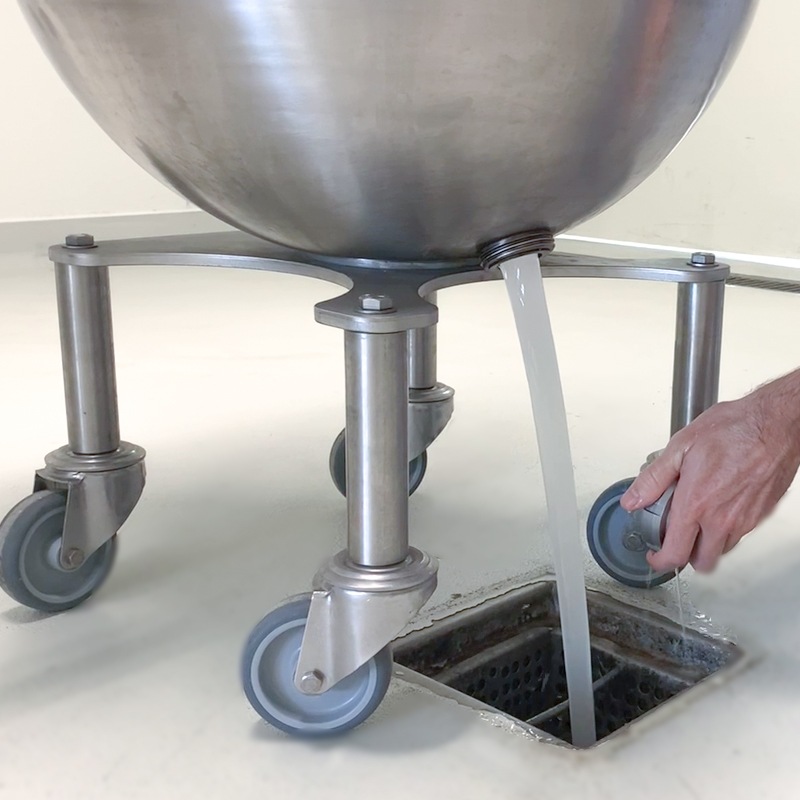
Best Practice #4 : Regular maintenance as a guarantee of durability
We recommend that bakers carry out a visual check of worn parts and a daily cleaning or a cleaning between each production cycle. Cleaning must be done with care in order not to damage components, mainly electrical elements.
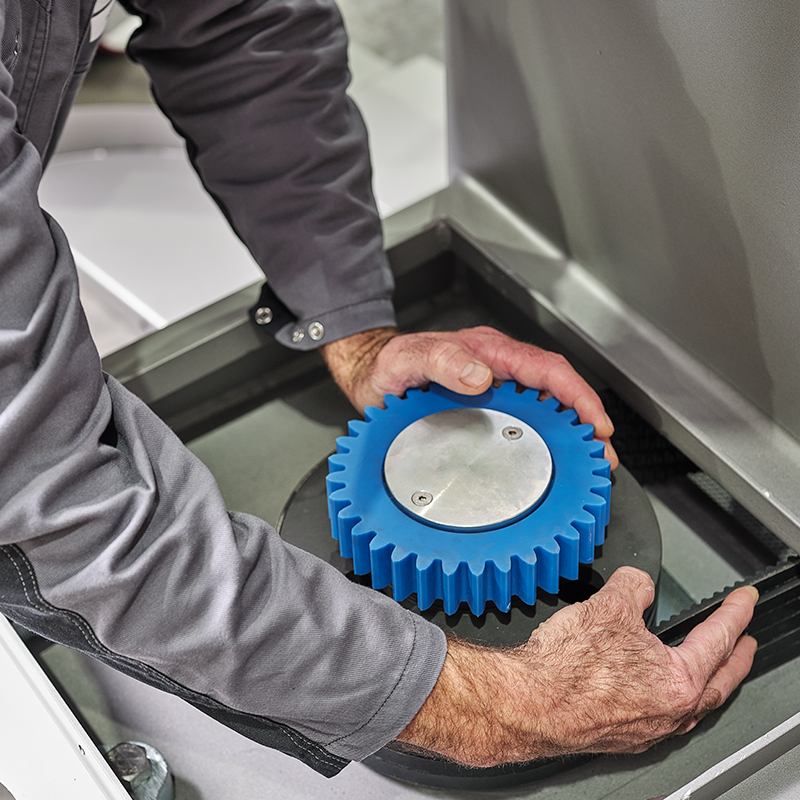
To guide you in your regular maintenance operations, we propose maintenance sheets adapted to each machine. They define precisely the actions to be carried out, the equipment and the time required. For some equipment, we provide video tutorials for better visualization of the operations to be performed. These guides concern mechanical, electrical, hydraulic or pneumatic checks.
Finally, an annual visit by a technician is strongly recommended. This is an opportunity for the technician to replace parts subject to wear and tear and to perform preventive maintenance operations to avoid future failures. At the same time, they can also advise you on how to use your machine to ensure its optimal operation.
By following these simple principles, your bakery equipment will last for many years while remaining efficient and high performing. It will be the perfect ally for all your recipes.
VMI offers a range of services and support to advise you how to best use and maintain your mixer. Please feel free to contact us for advice.
